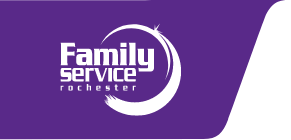FSR Seeking Reforms in State Aging in Place Funding
For over a decade, the state has awarded Community Services/Service Development CS/SD Grants to fund new and expanded home and community based services (HCBS) that support aging in place for older adults. With some exceptions and extensions, generally these competitive grants are awarded for one year. Though not named so in statute, these grants have come to be known as “Live Well at Home Grants.”
- Because of their short duration and the intent to support “new” programs, organizations that relied upon these grants to provide services found them to be an uncertain and unstable source of HBCS funding.
- Despite a policy commitment to aging in place and a growing senior population that desires to do so, the state lacks a stable source of support for programs with proven success providing HCBS.
H.F. No. 1851 and S.F. No. 1902 create a new live well at home grant extension, and appropriates money for the live well at home grant extension. The grant extension provides ongoing funding for projects and services with proven outcomes for older adults and persons with dementia. The grant extension builds statewide capacity and stability for community providers for on-going home and community-based services and family caregiver supports.
Live Well at Home grants will:
- provide ongoing home and community-based services to support older adults living in the least restrictive community setting,
- provide older adults with low cost services that will delay the use of more costly services, and
- achieve more awareness of lower cost in-home services as an alternative to nursing homes and other residential services.
Family Service Rochester (FSR) initiated this effort as part of the Age-Friendly Olmsted County (AFOC) planning process. An objective to reform HBCS state funding for stability and sustainability was included in the AFOC action plan. AARP Minnesota took an early interest, as did the Alzheimer's Association Minnesota-North Dakota Chapter. This group has met on several occasions with MDHS staff. They also met with Senator Carla Nelson and Representatives Tina Liebling and Kim Hicks (all three are authors on their respective bills).
Currently, the bill is supported by:
- Family Service Rochester
- Age-Friendly Olmsted County
- Olmsted County Board
- AARP Minnesota
- Alzheimer's Association Minnesota-North Dakota Chapter
- Southeast Minnesota Area Agency on Aging
- Minnesota’s Area Agencies on Aging
- Minnesota Leadership Council on Aging
- Living at Home Network
- Minneapolis Regional Retiree Council
- Helping Hands Outreach
H.F. No. 1851 was unanimously passed out of the Human Services Policy Committee on 03/01/23. It will go before the House Finance Committee later in March. A hearing for S.F. No. 1902 has yet to be scheduled.
Testimony of April Sutor, FSR Director of Innovation and Collaboration, before the Minnesota House Human Services Policy Committee, March 1, 2023.
I’m April Sutor with Family Service Rochester, where I lead our Senior Independence work. Along with mental health and child and family wellbeing, FSR provides home and community based services with older adults in Olmsted and Rice Counties in SE MN. Our paid staff of 9 FTE and 800+ volunteers help upwards of 1,000 seniors and persons with disabilities to remain living in their homes and communities. Over the past 8 years, we diversified our funding streams to create greater stability and expanded Senior Independence services to a growing number of rural communities who lack services.
Volunteers form the core of our service delivery model which include Meals on Wheels, respite, evidence-based classes, chores (like snow/lawn care, transportation, housekeeping, grocery delivery, falls prevention, handiwork and home modifications). More than 800 volunteers gave 44,942 hours of service in 2022. That’s 21.6 FTE. In 2021 it was 40,124 hours or 19.3 FTE. Volunteers perform nearly 80% of all the our senior services. In 2022—of the 42,861 task completed--volunteers completed 39,911. That’s 93% of all the senior services.
Three local advisory councils guide our work. We utilize a cost share model where consumers contribute to the cost of services based on their income. Consumers do contribute to the cost and volunteers make services accessible/affordable. Housekeeping, handiwork—could cost as little as $6/hr for a low-income consumer.
Despite our diverse funding streams, consumer contributions, an remarkably dedicated volunteers, sustainability remains a constant struggle.
FSR has been fortunate to receive DHS Live Well At Home grants for a number of years. Under the existing legislation, these grants have helped us expand to small communities and rural areas and continue to innovate. However the current Live Well grants are generally for only one year and not meant to provide stable support. This lack of stability presents a serious challenge when trying to sustain needed services for lower income seniors unable to afford fees that cover costs. Likewise, in rural areas, the senior population may simply not be sufficient in number to provide a minimal consumer base necessary to support a service provider.
For successful programs like those once present in La Crescent, Albert Lea, and Chatfield—the loss of a grant like Live Well meant programs closing their doors.
Seniors don’t go away and their needs don’t stop just because funding does. With no services—seniors have little choice but to move to residential facilities where their resources are quickly depleted. Then, they turn to government for support.
Providing services that help older adults age in place saves government and, in turn, taxpayers money. A senior receiving multiple services through FSR might pay $2,000 a year while they could pay as much as $2,000 or more/month at facilities across SE MN.
Stable, renewable, foundational funding for organizations who deliver on their proposed outcomes is what we need and what we seek through this legislation. Doing so builds statewide capacity and stability for home and community-based senior services and family caregivers.
Help us meet the growing needs of the fastest growing demographic in Minnesota—older adults—in the most cost effective manner and in the environment of their choice—the homes and communities they know and love.



